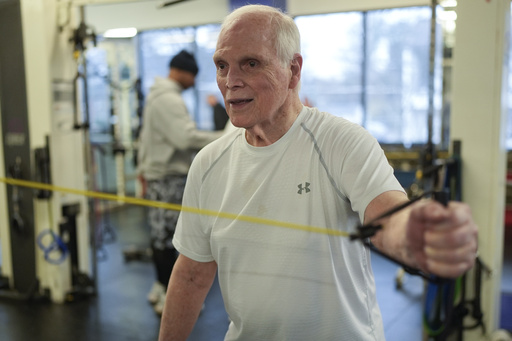
Maintaining a consistent exercise routine can be a challenge, especially when motivation wanes. Many find that resolutions to exercise fall by the wayside, making it difficult to cultivate the habit needed to reap physical and emotional rewards. However, as individuals age, integrating regular physical activity into their lives becomes increasingly crucial.
Not only does exercise contribute positively to physical health—helping to decrease the likelihood of falls and facilitating everyday activities—but it also significantly benefits cognitive functions. Dr. Amy Eyler, a public health expert from Washington University in St. Louis, emphasizes the vital link between physical activity and mental acuity. “It is critical to be physically active if you want to maintain cognitive activity,” she noted.
Why should one incorporate exercise into daily life? Regular physical activity is essential for preserving bone density and muscle strength. Moreover, it helps reduce the risk of heart disease and certain cancers. For the elderly, consistent exercise enhances strength and balance, fostering a more independent lifestyle. Additionally, engaging in physical activity may bolster the immune system, underscoring the numerous advantages of an active lifestyle.
The psychological impacts of exercise cannot be overlooked either. Completing a workout can lead to improved mood and an enhanced sense of self-worth. However, initiating a routine may seem daunting. Each individual’s motivation to exercise can vary significantly, and many newcomers may require external incentives initially. Dr. Eyler suggests that personal goals—such as wanting to engage more with grandchildren or preserve driving abilities—can serve as crucial motivators until intrinsic motivation develops.
To facilitate goal-setting, Eyler encourages individuals to evaluate their confidence in achieving their objectives on a scale from 1 to 100. “You need to feel over 90% confident in your ability to succeed, or else the likelihood is you won’t stick to it,” she explained. Many people tend to set unrealistic goals, ultimately leading to disappointment and discouragement.
Starting small is key. “Walk whenever possible,” Eyler advises. “Ten minutes of walking can be done almost anywhere—indoors, at work, or at home.” Additionally, when motivating others, it’s more effective to focus on positive outcomes rather than using criticism or nagging. She concluded with an example: “Encouraging someone by highlighting the independence gained from managing their health is far more effective than merely telling them to take their medication.”
To gain further insight, three dedicated gym-goers aged between 77 and 86 offered their experiences on how to embark on a fitness journey. Each began later in life and maintains their commitment thanks to the guidance of Dr. Irv Rubenstein, an exercise scientist with a facility located in Nashville, Tennessee.
Kathryn Dettwiller, 77, shares how her husband nudged her towards exercise 34 years ago, despite her long-standing aversion to gym classes. Now, she trains with a coach twice weekly, which she credits for her ongoing discipline. “What started as an external motivation has become an internal realization of my needs,” she said, while cautioning newcomers to expect some challenges along the way.
Rick Bolsom, 82, finds structure and routine in his thrice-weekly workout regimen, which was inspired by his wife nearly 20 years ago. “I continue because I feel better physically and mentally,” he remarked, highlighting the importance of working with a trainer to instill a sense of routine. For him, training has transitioned from a chore to a lifestyle, enriching his post-retirement life.
Dr. Grover Smith, an 86-year-old retired radiologist, embodies the benefits of regular exercise three times a week, a habit he adopted at age 74. After multiple suggestions from his cardiologist, he initially planned to attend just once but found himself returning long term. He fondly recalls a recent appointment where an eye doctor remarked he appeared a decade and a half younger, to which he humorously replied, considering her profession, “I’d suggest you get your eyes checked!”
Each of these individuals showcases the diverse paths leading to a healthier, more active lifestyle. Incorporating movement can forge connections between body and mind, nurturing overall well-being and enhancing the pleasures of daily life.

